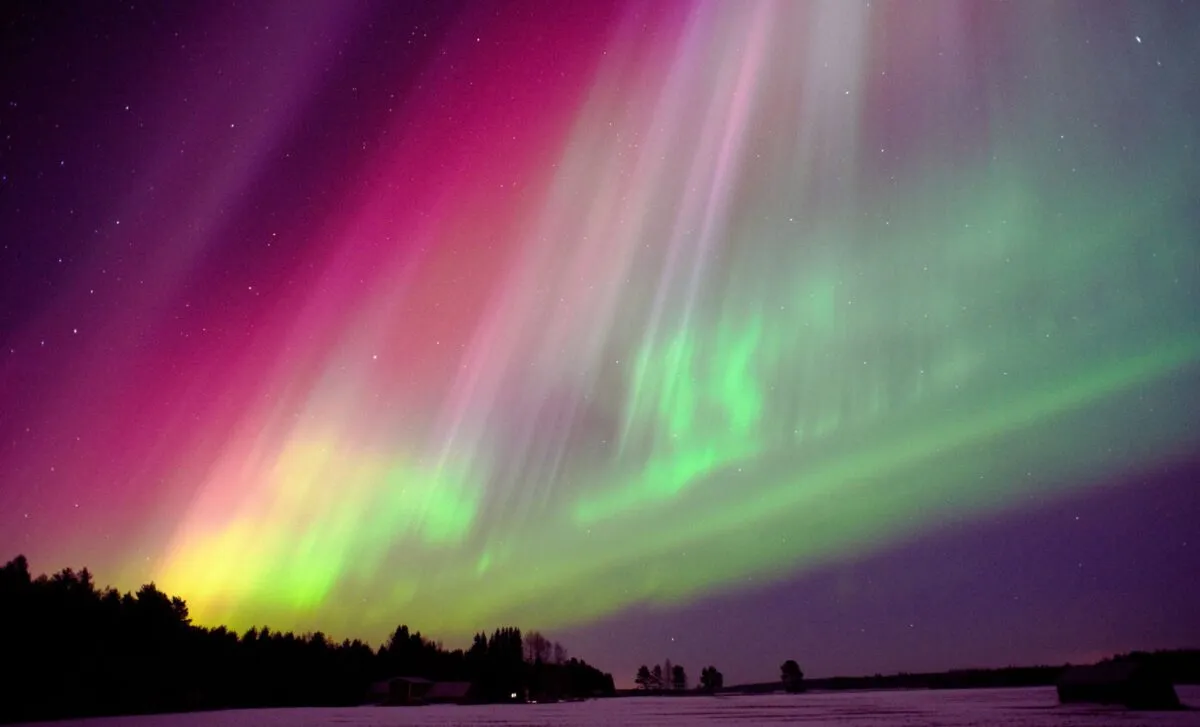
This weekend, skywatchers across parts of the United States are in for a treat as the northern lights, also known as auroras, are expected to light up the skies. This remarkable display is due to an ongoing geomagnetic storm, which is the result of turbulent space weather affecting our planet. Following a recent solar storm that occurred on June 12-13, the aurora oval—the area where these mesmerizing lights typically form—may shift further south than is usual. This creates a rare opportunity for enthusiasts in states that usually do not see the auroras to witness this vibrant natural phenomenon.
According to NOAA’s Space Weather Prediction Center (SWPC), the impacts of the solar storm, together with a co-rotating interaction region (CIR) in the solar wind, are set to extend the visibility of the northern lights to a broader area of the northern U.S. than normal. A moderate (G2) geomagnetic storm warning has been issued for June 14, indicating that the aurora oval could potentially be visible in areas as far south as Wyoming and New York. The 18 states most likely to catch this spectacular show include:
Alaska Montana North Dakota Minnesota Wisconsin Michigan South Dakota Maine Vermont New Hampshire Idaho Washington Oregon New York Massachusetts Connecticut Rhode Island WyomingGeomagnetic storms occur due to disturbances in Earth’s magnetic field, often instigated by solar winds or solar storms. When a solar storm reaches our planet, it disrupts the magnetic field and triggers a geomagnetic storm. These storms are classified on a G-scale, which ranges from G1 (minor) to G5 (extreme). A G2 storm, categorized as moderate, possesses sufficient energy to push the aurora oval—usually concentrated near the poles—further south. This phenomenon grants an exciting opportunity for skywatchers in northern regions of the U.S. to witness the northern lights.
On June 12-13, a moderate G2 storm impacted Earth, and following that, a CIR—a sector in the solar wind where fast-moving particles collide with slower-moving ones—is anticipated to influence space weather conditions around June 14. This combination of turbulent space weather conditions significantly increases the likelihood that 18 U.S. states will experience the stunning display of the northern lights over the upcoming days.
While geomagnetic activity is a crucial aspect of aurora visibility, other environmental factors can greatly influence your chances of seeing the lights. The best time to observe the northern lights is usually between 1-2 a.m., when the sky is at its darkest. However, several other conditions should also be considered:
Cloud Cover: Clear skies are vital for observing the aurora. Even with favorable geomagnetic conditions, thick cloud cover can obstruct the view of the lights. Light Pollution: For the optimal viewing experience, seek out a dark, north-facing location, away from city lights. Shorter Nights: As we approach the summer solstice on June 20/21, nights will become shorter, making it necessary to catch the northern lights in the early morning hours for a good chance of visibility.Stay informed about space weather conditions and prepare for an unforgettable experience as the northern lights are poised to dazzle skywatchers this weekend!